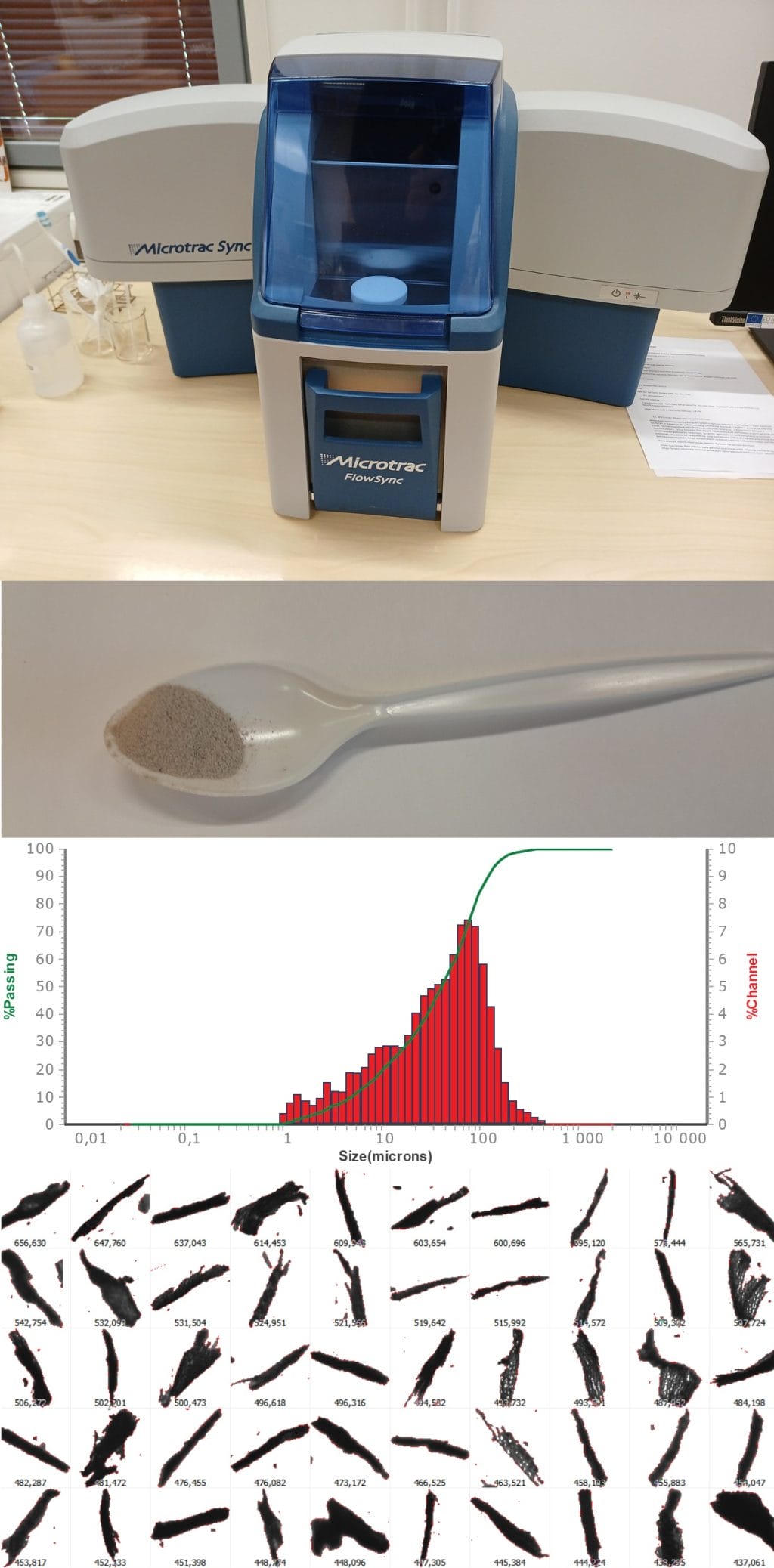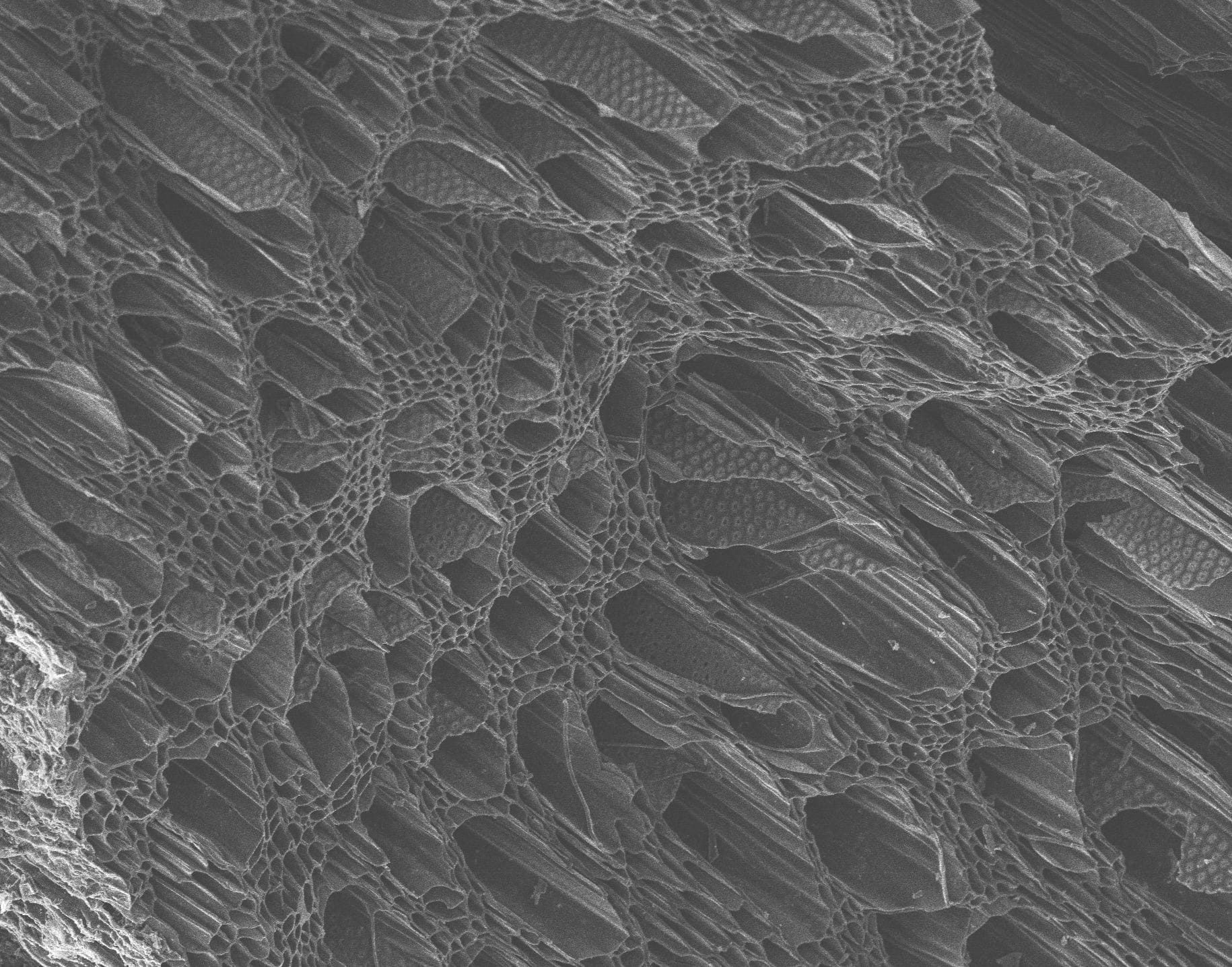
Material analysis and quality control
Laboratory analysis services available
We offer chemical and physical measurement techniques to study the structure of materials. These include methods to study the size distribution of milling experiments and the chemical composition of organic materials.
Using electron microscopy, we can image a wide range of materials, such as the willow charcoal in the adjacent image.
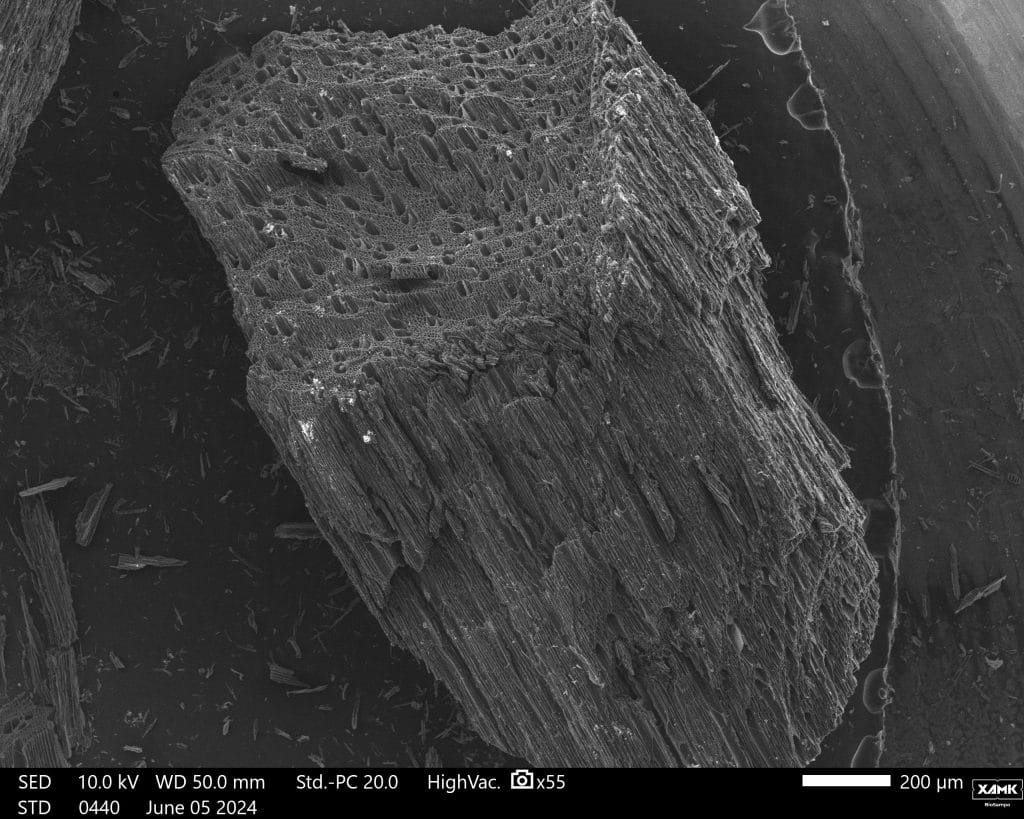
FESEM-EDS Jeol JSM-IT700HR
A field emission scanning electron microscope, is used to image structures smaller than light down to 2 nm. The instrument also features EDS (energy dispersive spectrometry), which identifies elements from the characteristic electron excitations in X-rays. EDS provides a rough estimate of the elements in the sample.
Electron microscopy is a widely used and practical method in materials science.
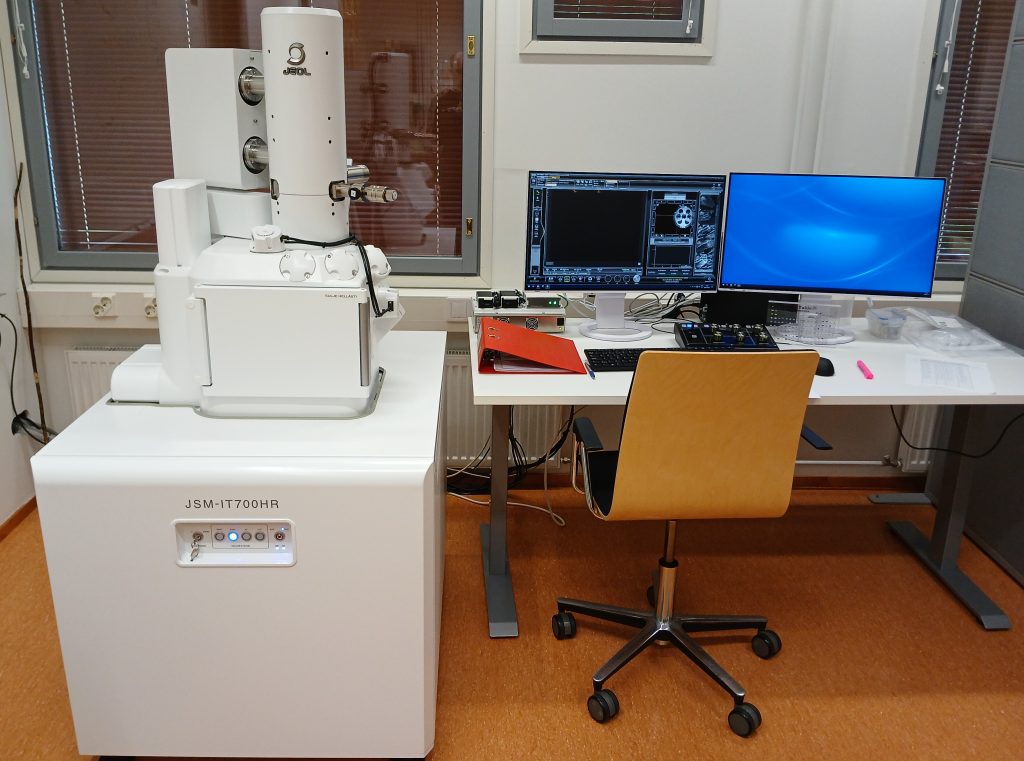
CHNS/O Elementar vario MACRO cube
CHNS/O analysis, or organic elemental analysis, is a chemical analysis method for determining the total concentration of various elements. The content of carbon, hydrogen, nitrogen, and sulfur in a sample is determined by burning the sample, completely burning the elements in excess of oxygen, and determining the concentration of the elements by measuring the amount of each fraction individually.
Oxygen is determined by pyrolyzing the sample and measuring the amount of oxygen produced by reducing it to carbon monoxide by passing it through a graphite matrix.
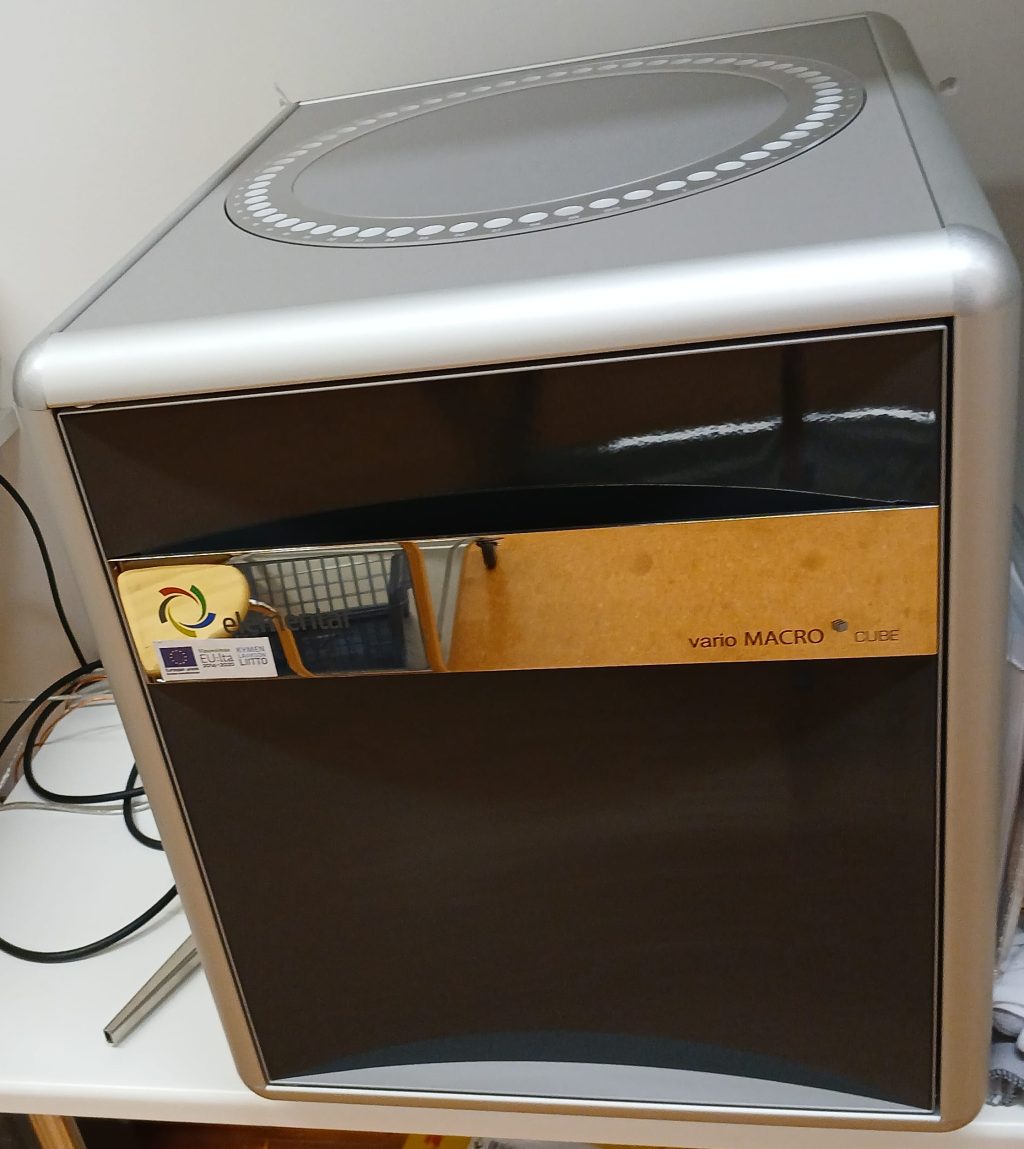
Microtrac Bellsorp MAX II
Analyzer acquired to measure the BET specific surface area [m²/g]. The gas adsorption measurement is performed with nitrogen gas. For carbon samples a BET method is used to measure the specific surface area of the Type I adsorption isotherm according to ISO 9277.
Other interesting calculation methods that can be used with the instrument are t-plot, NLDFT (Non-Localized Density Functional Theory) and GCMC (Grand Canonical Monte Carlo) methods. These are used to estimate the volume distributions of the pores.
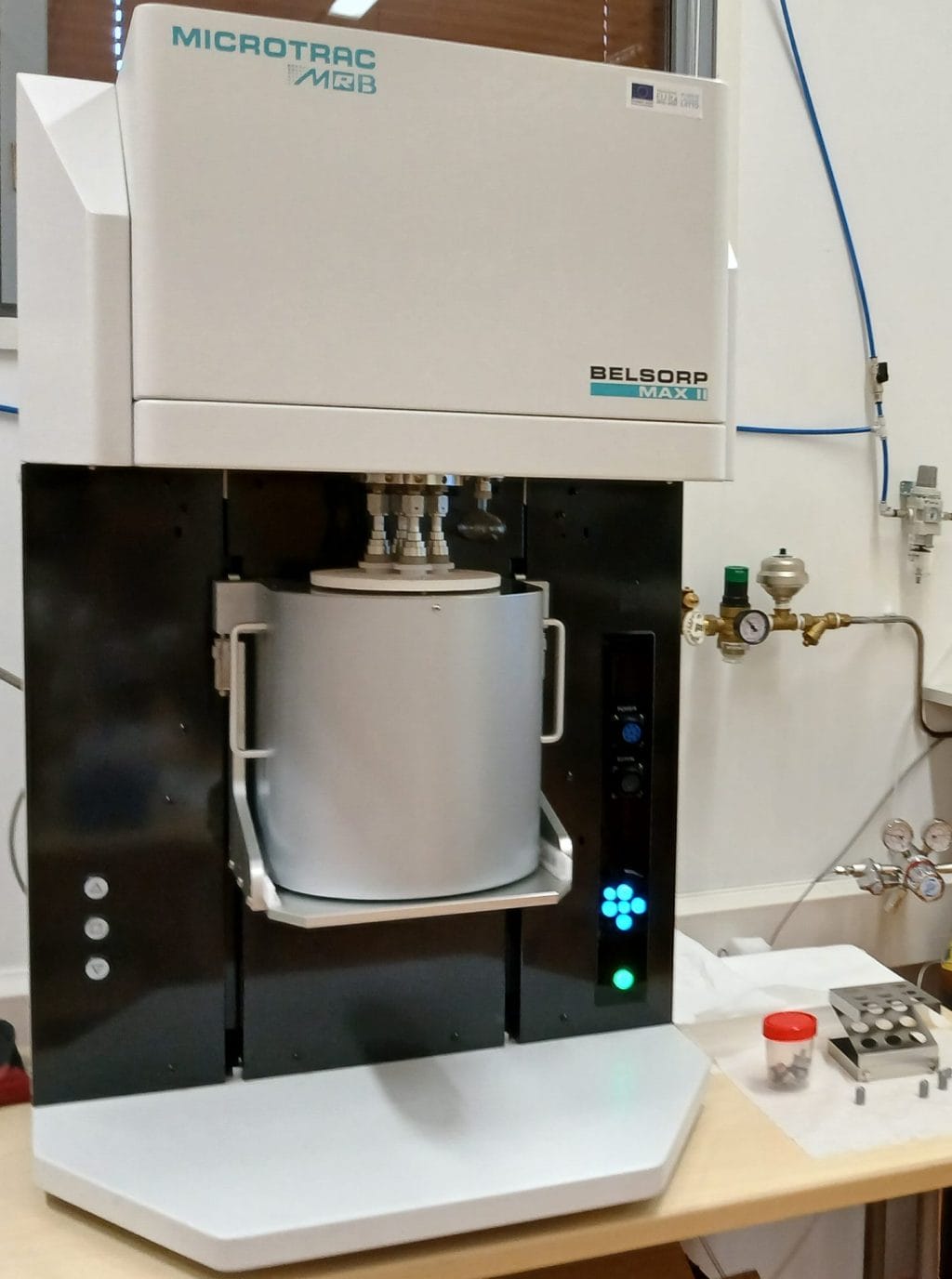
TGA-MS Netzsch TG 209 F1 Libra + QMS 403 Aëolos Quadro
TGA (Thermo Gravimetric Analysis) is used to analyze the amount of volatiles in materials during a heating gradient. The instrument is used, among other things, for experimental pyrolysis recipes in a nitrogen atmosphere. The instrument can also be used to test volatile compounds in material quality testing.
The mass spectrometer provides information about the composition of volatile gases. The instrument measures ionized molecules and their characteristic decomposition products.
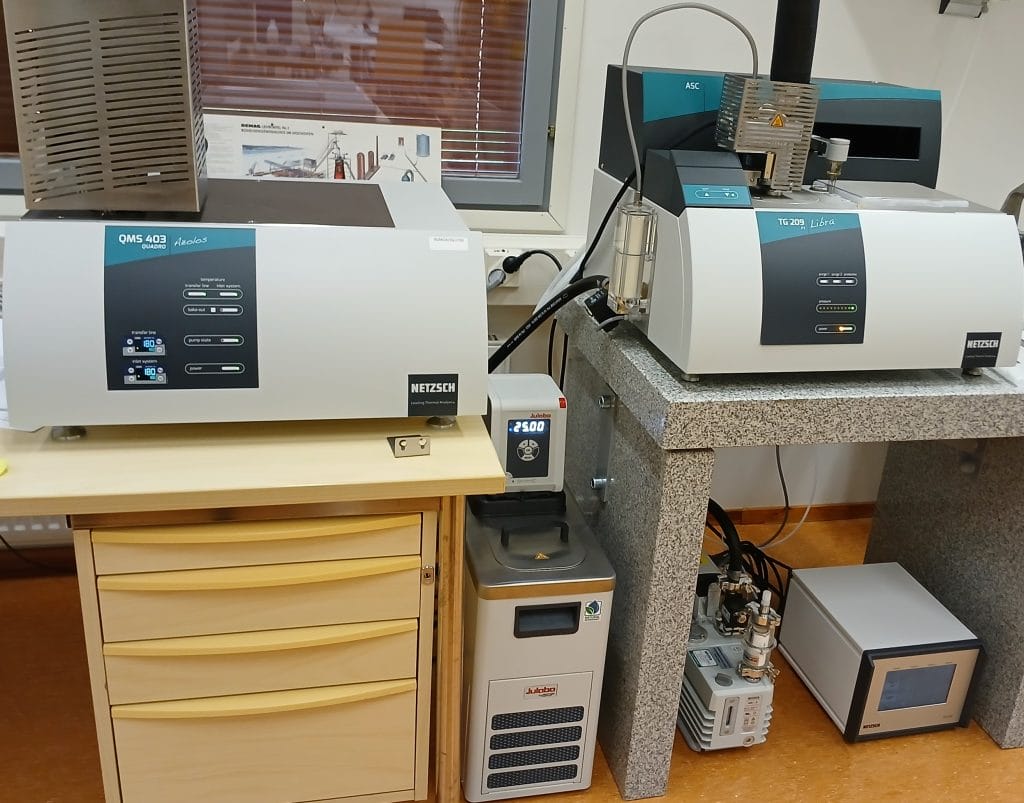
Particle size distribution analyzer Microtrac Flowsync
The instrument measures particle size using three red lasers with a measuring range of 0.02-2000 μm. The instrument’s high-speed camera images a portion of the sample stream of particles against a backlight and displays their silhouettes to determine the shape of the sample particles.
The instrument measures particle size by the wet method, where the sample to be analyzed is added to a suitable carrier. The most common carrier is pure water, but alcohols are also possible. When selecting a carrier, care should be taken to ensure that the samples to be analyzed do not dissolve in the liquid used as the carrier.
